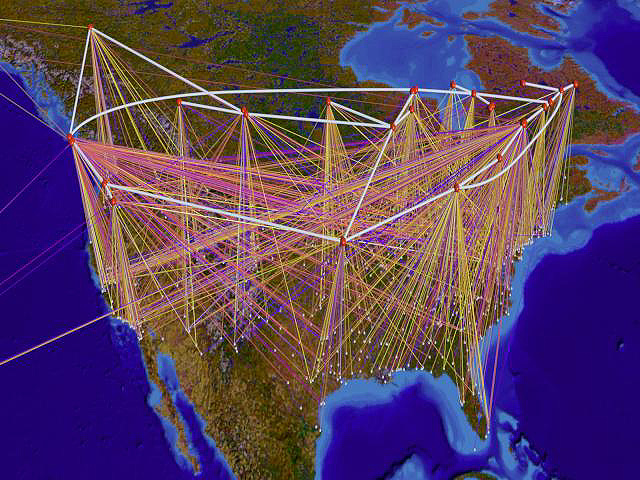

In the Flooding model, the data is delivered to all active nodes in the network. To transfer data over the network, all intermediate nodes must be active and connected at all times. Through the Routing mode, data packets are exchanged in a predefined path that includes numerous hops among nodes before being delivered to the destination. Routing and flooding are the two principles that govern mesh topology. It indicates that in this network, all the devices do not need to be connected in this network. In the Partial mesh topology, on the other hand, only a few nodes are connected to all other nodes.
#Online network topology mapper full#
A full mesh topology, which provides a lot of redundancy, is normally reserved for network backbones. If there are n nodes available in the network, a Full mesh is a network in which each node has an n-1 number of connections. There are two types of mesh networks: full mesh and partial mesh. Furthermore, because data is “half-duplex”, meaning it can’t be sent in two directions at the same time, this arrangement isn’t ideal for networks with high traffic volumes.Ī mesh topology is an extensive and detailed framework of point-to-point connections in which each device on the network is connected to another device on the network, transferring data solely between the two units.If a cable fails, the entire network goes down, which can be time-consuming and costly to recover, though this is less of a concern with smaller networks. On the other hand, Bus topologies are Vulnerable since they employ a single wire to transport data.More nodes can be simply added to the network, if necessary, by adding more connections.Bus topologies are an Excellent, Cost-effective solution for smaller networks.Because the layout is basic, all devices may be connected through a single coaxial or RJ45 cable.Each additional node slows transmission speeds. Bus Network TopologyĪ bus topology aligns all the devices on a network along a single cable that runs in one direction from one end to the other, which is why it’s also known as a “line network topology” or “backbone network topology.” The network’s data flow also follows the cable’s path, traveling in one direction.īecause there is not much bandwidth, bus topologies are best suited for small networks.
#Online network topology mapper software#
We‘ll also discuss the use and benefits of network topology mapping software such as SolarWinds Network Topology Mapper.

The basic types of network topologies, their pros and cons, and factors for selecting which one is ideal for your business will be discussed in this article. Administrators can pick from a variety of logical and physical network topologies to create a secure, robust, and easy-to-maintain network. Keeping this in mind, this article will take you through the most common network topology configurations so you can get a sense of their benefits and drawbacks. There is no “correct” or “one-size-fits-all” solution, as there is with most things. What are the different Network Topologies? Depending on the overall network size and your requirements, there are various types of network topologies that are ideal for different purposes. A streamlined and well-managed network topology can help in decreasing operational and maintenance expenses by increasing energy and data efficiency.īuilding a durable, secure, and easy-to-maintain local area network (LAN) topology can make or break your business. The configuration of various telecommunication networks, such as computer networks, command and control radio networks, and industrial fieldbuses, is one of the principal uses of network topology. Network topology diagrams made with the software are useful for diagnosing network connectivity issues, evaluating network slowdowns, and troubleshooting issues in general. The correct topology can increase performance and data efficiency, as well as optimize resource allocation and lower operational costs. What is the importance of Network Topology?Ī network’s layout has a direct impact on its functionality. The topology, or configuration, of a network, is crucial in influencing its performance. Effective network management requires a strong understanding of both the physical and logical topology of a network to ensure that your network is efficient and healthy. On the other hand, Logical network topology is a little more abstract and strategic, it refers to the method in which data passes across the network between devices, regardless of the physical link between the units. Physical network topology refers to the physical signal transmission channel, for instance, the wires, cables, and so forth. There are two approaches to network topology: physical and logical. Network topology refers to how a network is organized, and the way a network’s links and nodes are connected.


 0 kommentar(er)
0 kommentar(er)
